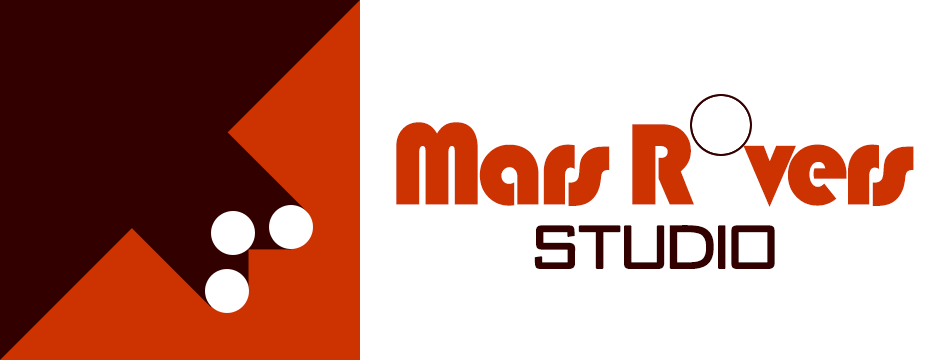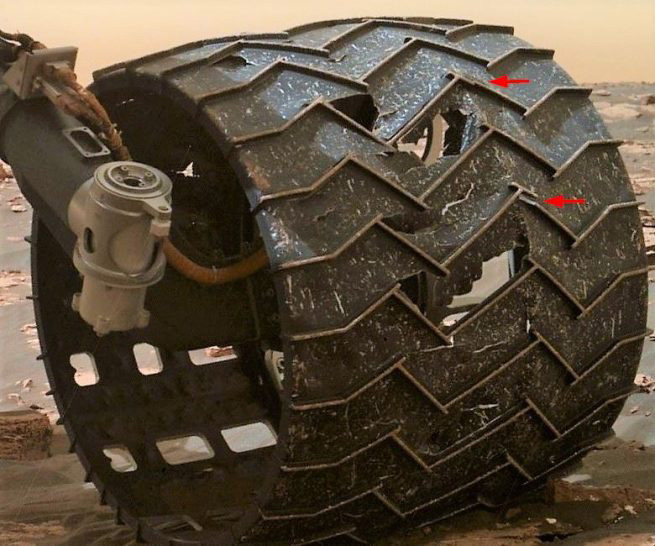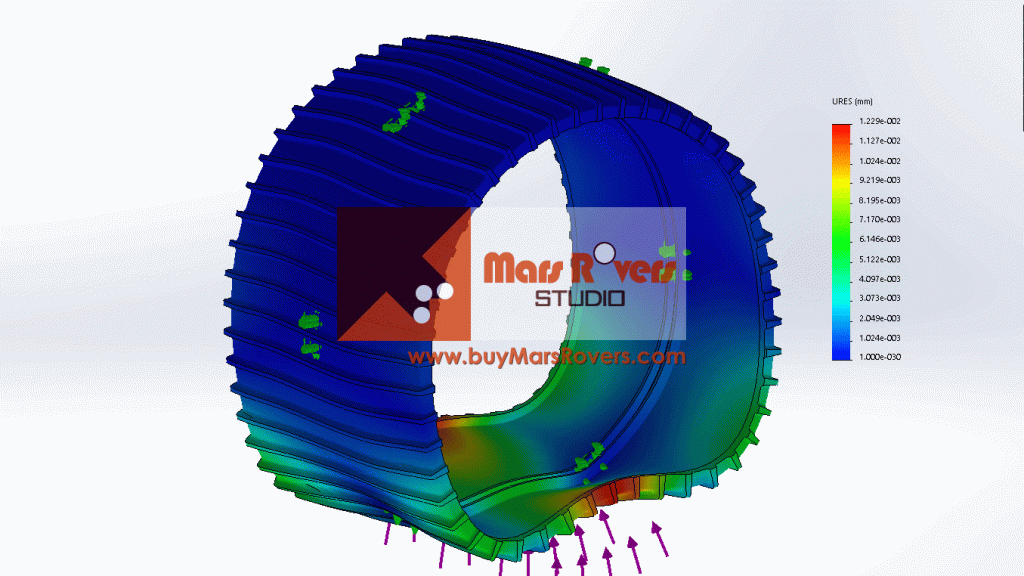The Mars 2020 Perseverance Rover‘s robotic arm is located on the front of the rover’s chassis. It has a length of 7 feet or 2.1 meters, which is the same length as its predecessor, the Curiosity rover. Our 1:2 Mars Rover Replica‘s robotic arm has a length of 3.5 feet or 1.05 meters. The Mars 2020 Perseverance Rover‘s robotic arm wields a rotating 45kg (or 99 lbs) turret assembly, which is 15kg (or 34 lbs) heavier than the Curiosity rover’s turret assembly because it carries bigger science instruments and a bigger corer for drilling compared to the Curiosity rover. The weight of our Mars Rover Replica‘s robotic arm will not be that heavy, because the instruments on it will only be decorations (but ultra-realistic decorations), and the material we use will be lightweight.
The purpose of the Mars 2020 Perseverance Rover‘s robotic arm is to help with exploring the Martian surface and collecting valuable Martian samples. It mimics the human arm – it has joints at its “shoulder”, “elbow” and “wrist” for maximum degrees of freedom. Our Mars Rover Replica‘s robotic arm will also have as many degrees of freedom as the real Mars 2020 Perseverance Rover‘s robotic arm. If the Mars 2020 Perseverance Rover is a human scientist, then the robotic arm is his human arm. At the end of the robotic arm, there is a turret assembly or a hand, and on the hand, there are the science instruments (SHERLOC, WASTON, PIXL), the gDRT, the Corer, and the ground contact sensor which are for Martian rock and soil sample caching. The gDRT and the ground contact sensor are introduced in [Turret of the Mars 2020 Perseverance Mars Rover].
There are some small motors or rotary actuators on the Mars 2020 Perseverance Rover‘s robotic arm, and with these actuators, the Mars 2020 Perseverance Rover‘s robotic arm has 5 degrees of freedom or 5 flexible joints: the shoulder azimuth joint, the shoulder elevation joint, the elbow joint, the wrist joint and the turret joint. Our Mars Rover Replica‘s robotic arm will also have these motors – not the same type or the same size, but the function of the motors is the same – so that the Mars Rover Replica‘s robotic arm is also 5 degree of freedom. The flexibility of the Mars 2020 Perseverance Rover‘s robotic arm allows it to rotate the turret accurately to a location of interest so that the corer can start its initial abrading operation for the later sampling process, or for the science instruments analyzing process.
After the science team on Earth decides which rocks or regolith to sample, Mars 2020 Perseverance Rover will give the robotic arm the “go” for sample caching. The Mars 2020 Perseverance Rover’s robotic arm will rotate the corer to an angle that is best for the drill bit to operate. Depending on the condition of the drilling site, the drill will choose the rotary mode or the percussive mode for the sample caching. After the sample rocks or regolith are collected, the Mars 2020 Perseverance Rover’s robotic arm will transfer the sample tubes to the bit carousel for the later processes. Although the Mars Rover Replica‘s robotic arm doesn’t have the function like the real Mars 2020 Perseverance Rover, users can control the Mars Rover Replica to drive and mimic the movement of the robotic arm.




